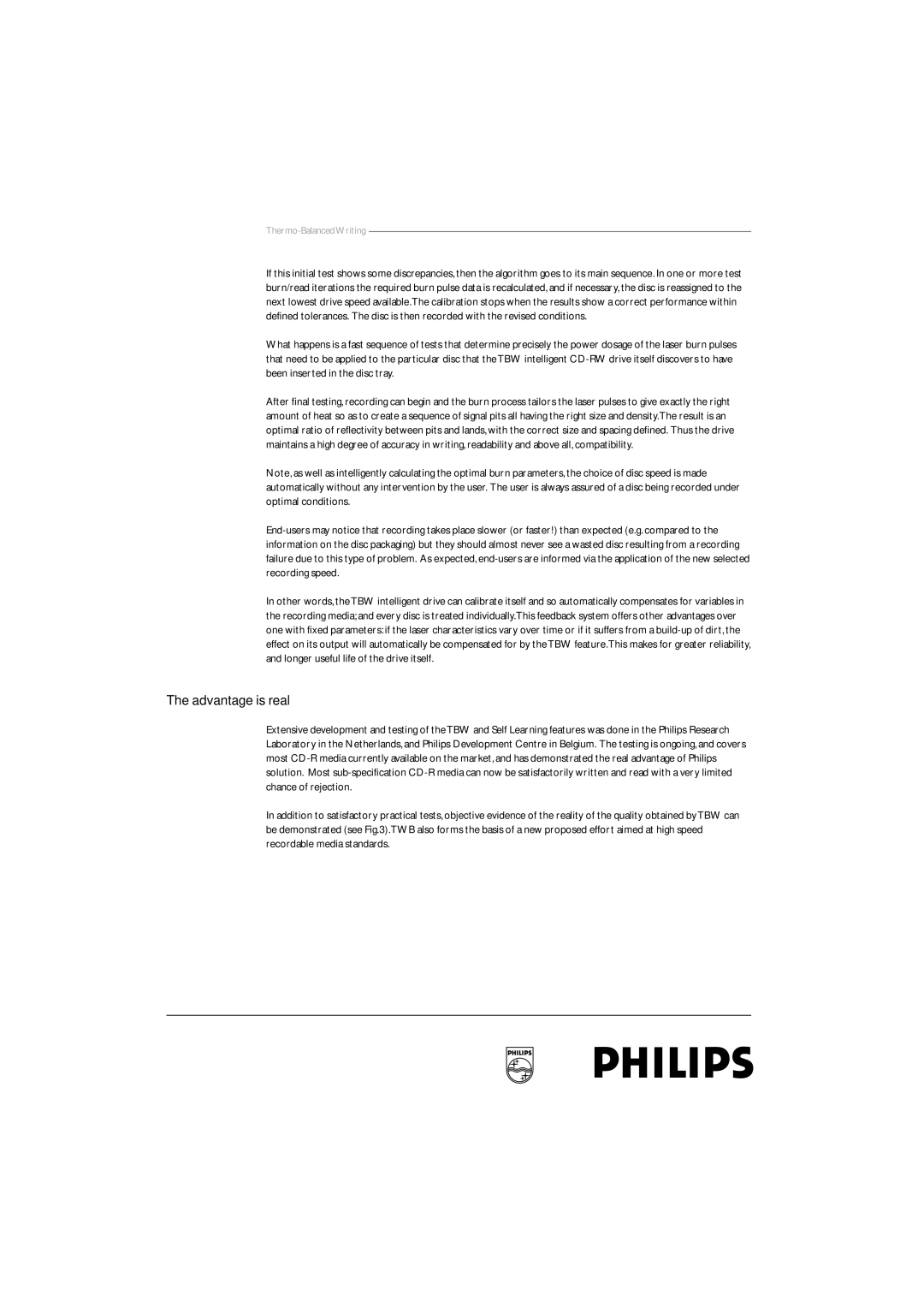
If this initial test shows some discrepancies, then the algorithm goes to its main sequence. In one or more test burn/read iterations the required burn pulse data is recalculated, and if necessary, the disc is reassigned to the next lowest drive speed available.The calibration stops when the results show a correct performance within defined tolerances. The disc is then recorded with the revised conditions.
What happens is a fast sequence of tests that determine precisely the power dosage of the laser burn pulses that need to be applied to the particular disc that the TBW intelligent
After final testing, recording can begin and the burn process tailors the laser pulses to give exactly the right amount of heat so as to create a sequence of signal pits all having the right size and density.The result is an optimal ratio of reflectivity between pits and lands, with the correct size and spacing defined. Thus the drive maintains a high degree of accuracy in writing, readability and above all, compatibility.
Note, as well as intelligently calculating the optimal burn parameters, the choice of disc speed is made automatically without any intervention by the user. The user is always assured of a disc being recorded under optimal conditions.
In other words, the TBW intelligent drive can calibrate itself and so automatically compensates for variables in the recording media; and every disc is treated individually.This feedback system offers other advantages over one with fixed parameters: if the laser characteristics vary over time or if it suffers from a
The advantage is real
Extensive development and testing of the TBW and Self Learning features was done in the Philips Research Laboratory in the Netherlands, and Philips Development Centre in Belgium. The testing is ongoing, and covers most
In addition to satisfactory practical tests, objective evidence of the reality of the quality obtained by TBW can be demonstrated (see Fig.3).TWB also forms the basis of a new proposed effort aimed at high speed recordable media standards.
